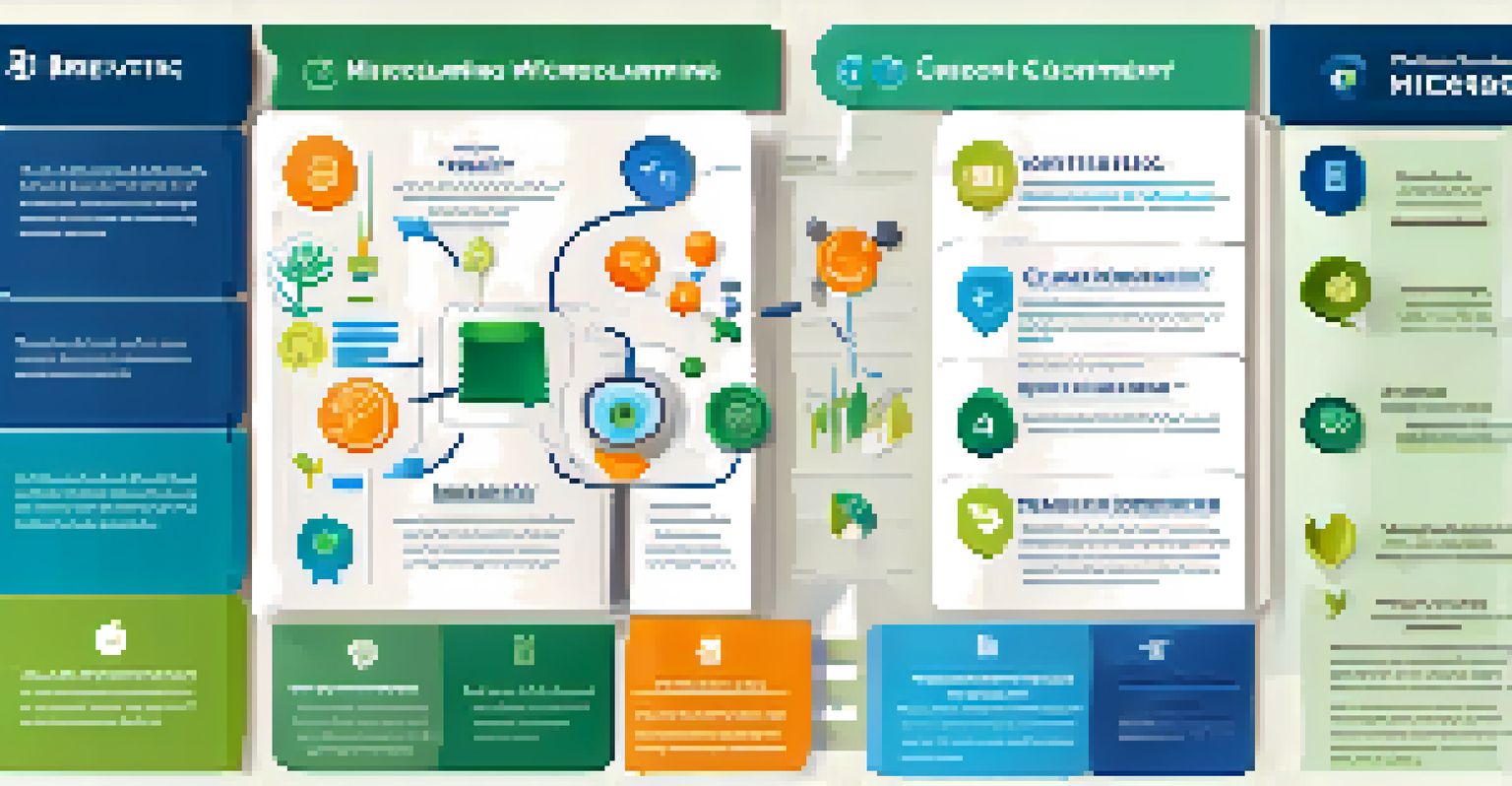Microlearning for Customer Service Excellence Training

Understanding Microlearning and Its Benefits
Microlearning is an educational approach that delivers content in bite-sized, easily digestible modules. This method is perfect for fast-paced environments like customer service, where agents need quick access to knowledge and skills. By focusing on specific topics, microlearning enhances retention and application in real-world scenarios.
Learning is not the product of teaching. Learning is the product of the activity of learners.
For instance, instead of a lengthy training session on conflict resolution, a customer service representative might engage with a short video or interactive quiz. This targeted training not only saves time but also keeps employees engaged and motivated. The flexibility of microlearning allows agents to learn at their own pace, fitting training seamlessly into their busy schedules.
Ultimately, microlearning fosters a culture of continuous improvement. When employees can quickly refresh their knowledge or learn new skills, they’re better equipped to handle customer inquiries effectively, leading to improved service delivery.
Key Components of Effective Microlearning
Effective microlearning is built on several key components, including brevity, clarity, and engagement. Each module should be concise, typically lasting between three to five minutes, ensuring that learners stay focused and absorb the material. Clarity is equally important; content should be straightforward, using simple language and relatable examples.

Engagement can be heightened through interactive elements like quizzes, gamified content, or scenario-based learning. These techniques not only hold the learner's attention but also encourage active participation and deeper understanding. For example, a role-playing exercise can help agents practice their responses to a difficult customer situation in a safe environment.
Microlearning Boosts Training Efficiency
Microlearning delivers content in bite-sized modules, enhancing retention and engagement for customer service training.
By incorporating these components, organizations can create microlearning experiences that resonate with employees, making training more effective and enjoyable. This ultimately leads to a more confident and capable customer service team.
Implementing Microlearning in Customer Service Training
To successfully implement microlearning, organizations should first assess their training needs and existing resources. Engaging with customer service teams can provide valuable insights into the specific skills and knowledge gaps that need addressing. This collaborative approach ensures that the microlearning content is relevant and tailored to the team's needs.
The beautiful thing about learning is that no one can take it away from you.
Once the needs are identified, organizations can leverage various platforms and tools to deliver microlearning modules. Whether using a learning management system (LMS) or mobile apps, accessibility is key; agents should be able to access training materials anytime, anywhere. For instance, creating short podcasts or video clips can allow agents to learn during breaks or commute times.
Finally, continuous feedback and iteration are essential for refining the microlearning content. Regularly evaluating the effectiveness of the training and making adjustments based on learner feedback ensures that the program remains relevant and impactful.
Measuring the Impact of Microlearning
Measuring the effectiveness of microlearning initiatives is crucial to understanding their impact on customer service performance. Organizations can use various metrics, such as completion rates, assessment scores, and employee feedback, to gauge learner engagement and knowledge retention. These data points provide valuable insights into how well the microlearning content is resonating with agents.
Additionally, tracking customer satisfaction scores can help establish a direct correlation between microlearning and improved service delivery. For example, if customer satisfaction ratings increase after implementing microlearning modules, it suggests that agents are applying their new skills effectively. This connection between training and performance underscores the value of investing in microlearning.
Key Components Enhance Learning
Effective microlearning relies on brevity, clarity, and engagement to create impactful training experiences.
To further enhance the measurement process, organizations should consider conducting regular follow-up assessments to evaluate long-term retention and application of knowledge. Continuous improvement through data-driven decisions can lead to a more effective customer service training program.
Overcoming Challenges in Microlearning Adoption
While microlearning offers numerous advantages, organizations may face challenges during its adoption. One common hurdle is resistance to change, as some employees might be accustomed to traditional training methods. To overcome this, it's important to communicate the benefits of microlearning clearly, emphasizing how it can enhance their skills and make their jobs easier.
Another challenge is ensuring that the microlearning content remains relevant and up-to-date. Rapid changes in customer preferences and technology can quickly render training materials obsolete. Organizations should establish a regular review process to keep the content fresh and aligned with current best practices.
Lastly, technical issues such as platform usability can hinder the learning experience. To address this, organizations should invest in user-friendly technology and provide adequate support for employees navigating the new system. By tackling these challenges head-on, organizations can create a successful microlearning environment.
Real-World Success Stories of Microlearning
Many organizations have successfully implemented microlearning to enhance customer service training, leading to impressive results. For example, a leading retail company adopted microlearning modules focused on product knowledge and customer interaction skills. The result was a noticeable increase in customer satisfaction scores and a decrease in handling time for inquiries.
Another success story comes from a major telecommunications provider that utilized microlearning to train agents on new technologies and services. By providing short, on-demand training sessions, agents were able to adapt quickly to changes and deliver better service. The company reported a significant boost in employee confidence and performance metrics.
Measuring Success Improves Impact
Tracking metrics like completion rates and customer satisfaction helps organizations evaluate the effectiveness of microlearning initiatives.
These examples highlight the tangible benefits of microlearning in real-world scenarios. When organizations invest in effective training methods, they not only improve customer service but also foster a more engaged and skilled workforce.
The Future of Microlearning in Customer Service
As the landscape of customer service continues to evolve, microlearning is poised to play a pivotal role in training and development. With advancements in technology, such as artificial intelligence and virtual reality, the potential for even more immersive and personalized learning experiences is on the horizon. These innovations could further enhance the effectiveness of microlearning by tailoring content to individual learning styles and preferences.
Additionally, the shift toward remote and hybrid work environments has made flexible learning solutions more important than ever. Microlearning can easily adapt to these changing circumstances, providing agents with the resources they need, regardless of their location. This adaptability ensures that customer service teams remain equipped to deliver exceptional support.

In conclusion, the future of microlearning in customer service training looks bright. By embracing this approach, organizations can cultivate a culture of continuous learning, ultimately leading to improved customer experiences and business success.